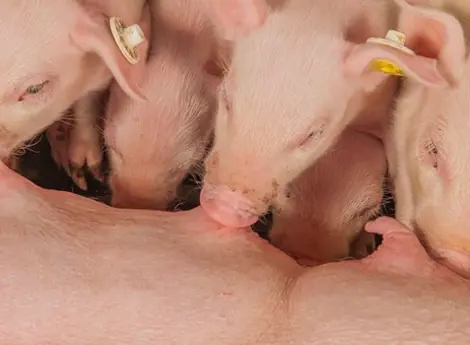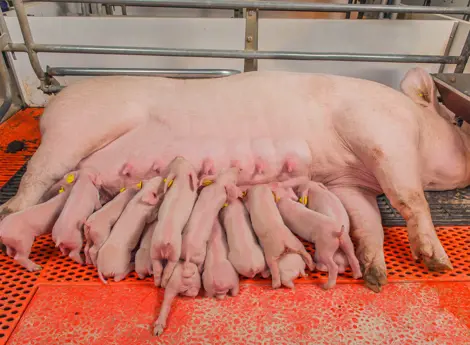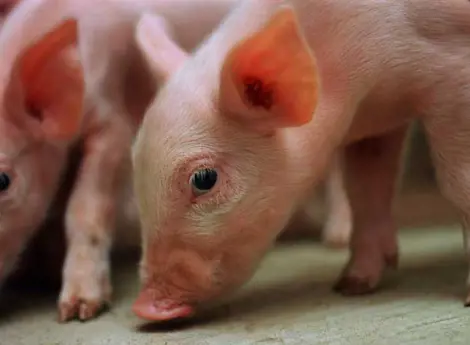From weaning to pregnancy: The five intensive days
The weaning to oestrus interval (WOI) is the start of a new reproductive cycle for sows. It is the period from the day of weaning up to, and including, the first day that the sow shows standing heat. During this period, the sow experiences several hormonal interactions which are important for developing oocytes (egg cells) and in combination with good nutrition result in many eggs being produced. Hopefully, after insemination, all of them become healthy piglets. This article highlights some key signs of oestrus and offers some tips and tricks that can be used to stimulate egg cell development to achieve large, healthy litters of piglets.

Oestrogen: a necessity for a successful oestrus
A sow needs to be ‘in heat’ or oestrus, to be inseminated. This normally occurs 4-7 days after weaning. When hormones, called oestrogens, are produced by the follicles then external, visual signals of oestrus can be seen such as:
- swollen, red vulva (more notable in gilts than sows)
- watery discharge from vulva
- tail upright while standing, and flicks up and down
- restless, climbing up gates and walls
- poor appetite
- pricked ears
- standing with an arched back
- trembling
- responds to pressure being applied on the back and flanks (see Figure 1 below)
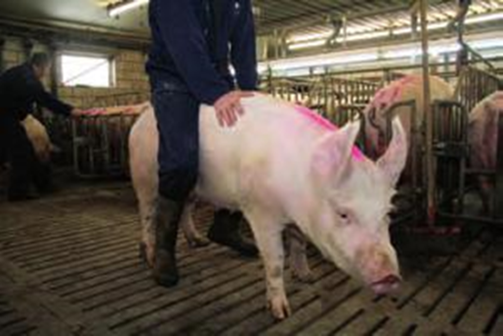
Figure: 1 Sow showing pricked ears and the standing reflex when back pressure is applied.
Follicle growth determines oestrogen levels
When a sow is weaned, the follicles are quite small (1-2 mm) and they produce low levels of oestrogens. Under the influence of the hormones follicle-stimulating hormone (FSH) and luteinizing hormone (LH), follicles start to grow (Figure 2). Increased levels of the oestrogens are produced as the follicles grow which intensifies the signs of oestrus. Just before ovulation (release of the egg) the levels of oestrogens are at their peak and the sow shows the most intense signs of oestrus and this is when she should be inseminated.
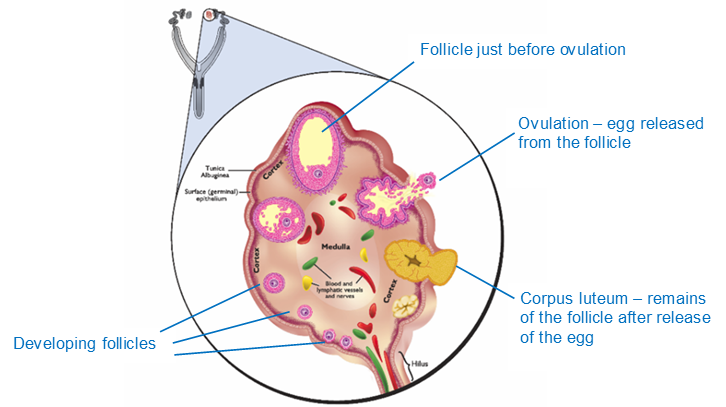
Figure 2: Diagram of the ovary showing the development phases of the follicles and the release of the egg – ovulation (adapted from Senger et. al.).
Sows that have difficulty coming into oestrus often may have low levels of oestrogens. This can be caused by sub-optimal development of follicles or environmental factors like heat stress. When follicle development is sub-optimal, egg cell quality will be lower, and this can affect the fertilization rate and/or piglet quality at birth.
Improving the signs of oestrus by improving follicle development
There are several things a farmer can do to try and improve the signs of oestrus to reduce the weaning to oestrus interval (WOI).
Limit weight loss
During lactation, follicle growth is minimal due to low levels of FSH and LH. The suckling of piglets creates a stimulus that prevents FSH and LH secretion and keeps the levels low. From day 14 onwards, gradual development of the follicles starts, and they are about 1-2 mm at weaning. When sows lose a lot of weight during lactation, follicle growth is affected and follicles at weaning can be smaller than normal. It then takes longer for them to grow to the size where they produce sufficient oestrogens for the sow to show signs of oestrus, increasing the WOI. The target is to limit weight loss to less than 10-12%. This is considered an acceptable weight loss, and it will have a limited effect on sow fertility.
Weight gain during lactation is also not good as follicle growth can be stimulated early and sows can show oestrus during the last week of lactation.
Stimulate hormone secretion
FSH and LH are regulated by Gonadotropin hormone-releasing hormone (GnRH) which stimulates follicle development. This all happens in the brain and, luckily, we can affect the release of the ‘brain hormones’ (Figure 3).
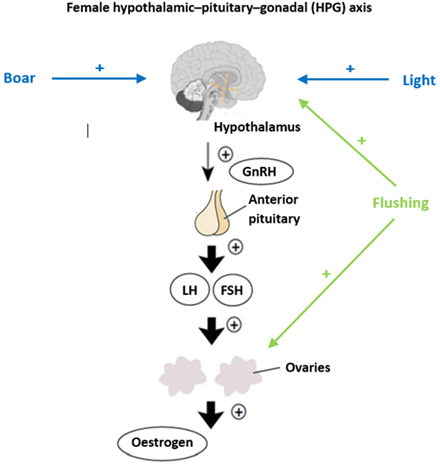
Figure 3 Schematic view of hormones influencing follicle growth. Adapted from Kong et al. 2014.
Exposing the sow to the boar can stimulate the release of GnRH which caused FSH & LH to be released. Boar exposure, twice a day for 10 minutes at a time, stimulates growth of the follicles and reduces the weaning to oestrus interval.
A light programme of 16 hours of light and 8 hours of darkness also stimulates the release of GnRH and reduces the WOI.
Flush feeding
Flush feeding stimulates insulin secretion, and this stimulates the release of GnRH. The release of growth hormone is also influenced by the release of insulin, and this increases follicle growth, and this increases the intensity of the oestrus signals. This effect cannot be achieved by just feeding more gestation or lactation feed as these feeds are designed to stimulate foetus growth or milk production. A specially formulated flush feed is designed to be fed only during the WOI period and it contains higher levels of sugar which stimulates the secretion of insulin.
Tips & tricks to keeping the WOI as short as possible
In the farrowing house:
- Limit weight loss to be less than 10-12% by:
- Using the correct feed
- Stimulating feed intake by feeding smaller amounts regularly
- Provide sufficient clean water
-
The climate must be comfortable for the sows with a consistent temperature of 20°C and no draughts
- Apply a 16-hour light and 8-hour darkness lighting programme
After weaning:
- Provide boar stimulation twice a day for 10 minutes at a time
- The climate must be comfortable for the sows with a consistent temperature of 20°C and no draughts
- Oestrus detection should be scheduled to be done during the cooler times of the day
- Flush feed should be fed from weaning up to, and including, the day that the sow shows standing heat
Glossary of technical terms
Follicle – is the structure that the egg (oocyte) develops, and which provides it with nutrients.
Corpus luteum – the follicle after ovulation has occurred.
Ovulation – the release of the mature egg which is ready to be fertilised.
GnRH – gonadotropin releasing home – activates the brain to release FSH and/or LH.
FSH – Follicle stimulating hormone – stimulates growth of small follicles.
LH – Luteinizing hormone – initiates ovulation and stimulates growth of larger follicles.
Oestrogens – hormones produced by the follicles which initiate signs of oestrus.
Progesterone – hormone produced by the corpus luteum that maintains pregnancy.
Should you require more information relating the intensive fire days from weaning to pregnancy please contact your De Heus Technical Specialist - https://www.deheus.co.za/meet-our-team/.


